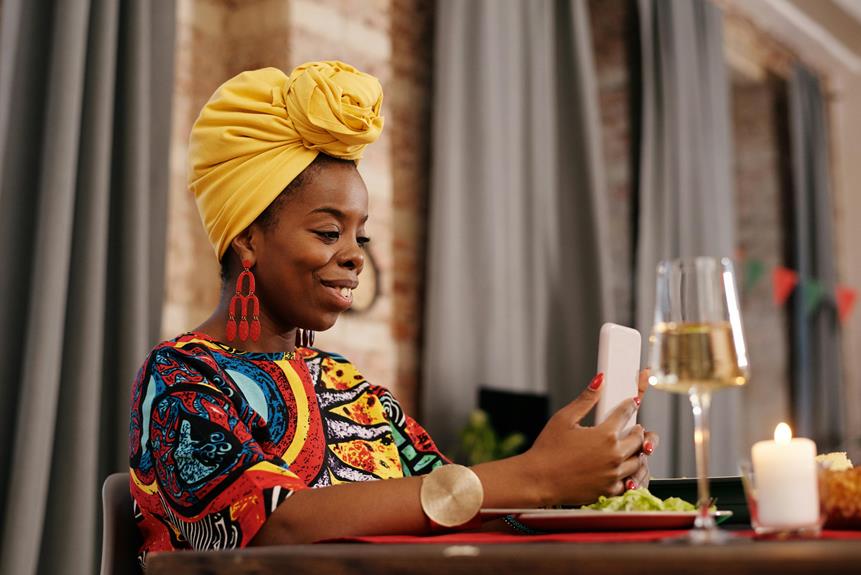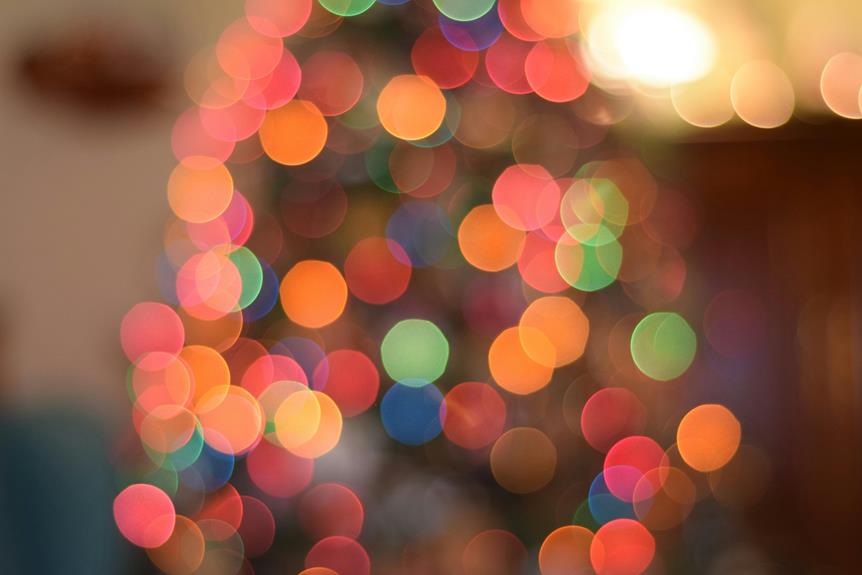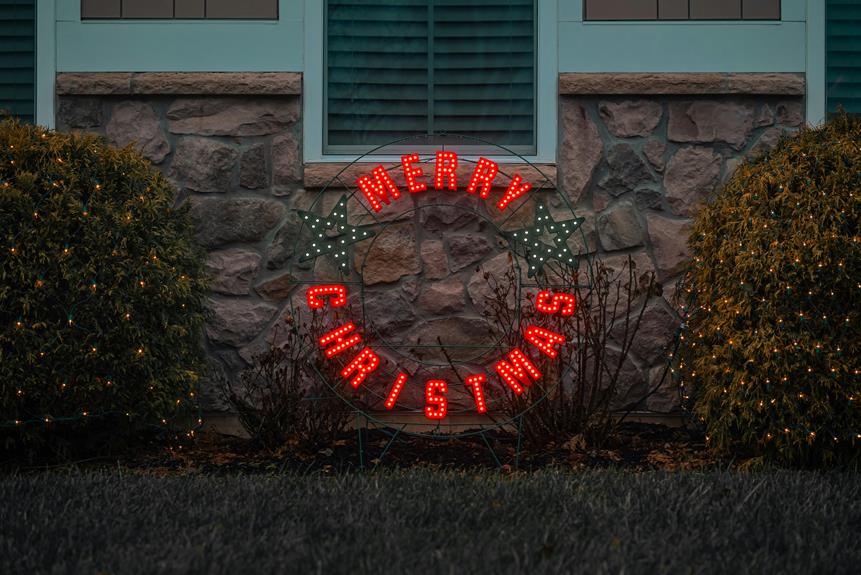As you explore Christmas in Victorian times, you'll learn how Queen Victoria and Prince Albert brought German traditions to Britain, making the holiday a national celebration. You'll discover the influence of German Markets, Yuletide Legends, and the concept of the Christmas tree. Victorian decorations featured opulent centerpieces, garlands, and ornate mirrors. The era also saw the rise of Christmas cards, card collecting, and festive music. Philanthropy was a key part of the season, with gift-giving and charitable donations. And, of course, there was the lavish Christmas feast, where social status was on full display. But there's more to uncover…
Key Takeaways
- Queen Victoria and Prince Albert's festive gatherings at Balmoral Castle helped popularize Christmas in England during the 19th century.
- German traditions, such as Christmas trees and festive markets, were introduced to Britain by Prince Albert, enriching Victorian Christmas celebrations.
- The Victorian era was characterized by opulent decorations, including candelabra centerpieces, garland swags, and ornate mirrors, which added elegance to holiday gatherings.
- The introduction of Christmas cards and the penny post in 1840 made it affordable for people to send cards, spreading joy and popularizing the idea of celebrating Christmas as a time for family and friends.
- Charles Dickens' novella "A Christmas Carol" revolutionized the way people thought about Christmas, sparking a wave of Christmas-themed literature that shaped the modern concept of the holiday.
Queen Victoria's Christmas Revival
As you explore the history of Christmas celebrations, you'll discover that Queen Victoria played a significant role in reviving the holiday, which had largely fallen out of favor in England during the early 19th century.
Her Royal Influence was instrumental in popularizing Christmas, making it a beloved national holiday.
The Queen's love for winter escapes to her Scottish Highlands estate, Balmoral Castle, also contributed to the holiday's resurgence.
During these winter escapes, Queen Victoria and her German husband, Prince Albert, would host festive gatherings, complete with decorations, feasting, and gift-giving.
These intimate celebrations not only revitalized the holiday spirit but also set a new standard for Christmas festivities.
As the royal family's traditions gained popularity, the British public began to emulate their practices, and soon Christmas was once again a cherished holiday.
The Queen's enthusiasm for the season was contagious, and her influence helped to shape the modern Christmas celebrations we enjoy and cherish today.
Festive Traditions From Germany
Prince Albert's German heritage brought a treasure trove of festive traditions to the British monarchy, and you'll find that many of these customs, like the evergreen Christmas tree, have become an integral part of your holiday celebrations today.
One of the most significant influences was the concept of German Markets, which were an essential part of the festive season in Germany. These markets, filled with festive treats, handmade crafts, and warm glühwein, brought joy and excitement to the holiday season.
As you wander through the stalls, you can almost smell the gingerbread and roasting chestnuts, transporting you to a bygone era.
The Yuletide Legends of Germany, filled with tales of Krampus and Saint Nicholas, added a touch of magic to the season. You might be surprised to learn that many of these legends have been woven into your own holiday traditions, making the festive season even more enchanting.
Decorating the Victorian Home
You'll transform your home into a winter wonderland by embracing the Victorian era's love of opulence and extravagance in your holiday decor. This era was all about grandeur and excess, so don't be shy about going all out with your decorations!
To create a truly Victorian-inspired holiday space, try incorporating these elements into your decor:
Candelabra centerpieces fill your dining table with ornate candelabras, adorned with candles, greenery, and ornaments. This will add a touch of elegance and sophistication to your holiday gatherings.
Garland swags hang garlands made of evergreen branches, holly, and mistletoe along your staircase or banister. This will add a festive touch to your home's architecture.
Ornate mirrors and picture frames hang ornate mirrors and picture frames on your walls, adorned with festive decorations like holly, berries, and ribbons. This will add a touch of glamour and sophistication to your holiday decor.
The Rise of Christmas Cards
How did the Victorians express their holiday cheer beyond decorating their homes?
One way was through the exchange of Christmas cards, a tradition that became increasingly popular during the Victorian era.
In 1843, Sir Henry Cole, a British artist and inventor, designed the first commercial Christmas card. His card featured a picture of a family enjoying a festive holiday meal, with the caption 'A Merry Christmas and a Happy New Year to You.' This innovative idea marked the beginning of a new tradition, and soon, Christmas cards became a staple of the holiday season.
As postal history shows, the introduction of the penny post in 1840 made it affordable for people to send cards to their loved ones.
This led to a surge in card collecting, with many Victorians compiling albums of their favorite designs. You can imagine the excitement of receiving a beautifully illustrated card in the mail, a tangible representation of the sender's holiday cheer.
The rise of Christmas cards not only spread joy but also helped to popularize the idea of celebrating Christmas as a time for family, friends, and festive merriment.
Caroling and Holiday Music
During the Victorian era, festive melodies filled the crisp winter air as carolers took to the streets, their joyful voices ringing out with familiar tunes that brought people together in the spirit of the season.
As you imagine yourself walking through the snow-covered streets, you're surrounded by the sweet sounds of Christmas carols, echoing from door to door. You can't help but hum along to the catchy melodies, feeling the festive atmosphere wash over you.
The variety of musical instruments accompanying the singers adds to the festive atmosphere. From the lively beat of the tambourine to the rich tones of the harmonium, each instrument adds its unique flavor to the choral harmony.
Accompaniment by local brass bands adds a bold and festive touch to the carols.
Use of musical instruments in homes allows families to gather 'round the piano or organ to sing together.
Street performances by traveling minstrels regale passersby with lively tunes and festive cheer.
As you continue to soak in the festive atmosphere, you can't help but feel a sense of community and joy, brought together by the power of music and the spirit of the season.
Gift Giving and Philanthropy
As Christmas morning dawns, the Victorian tradition of gift giving and philanthropy takes center stage, filling hearts with warmth and homes with thoughtful presents.
You'll find that the Victorians took gift giving very seriously, often spending weeks or even months preparing for the big day.
It wasn't just about exchanging gifts with family and friends, though. The Victorians also believed in spreading joy and kindness to those less fortunate.
You might make charitable donations to local organizations or participate in secret Santa gift exchanges for the poor.
In fact, the concept of Secret Santas originated during this time, where individuals would anonymously gift presents to those in need.
You might also volunteer at a local soup kitchen or participate in other acts of kindness.
The Victorians believed that Christmas was a time to give back to the community, and you can continue this tradition by incorporating philanthropy into your holiday celebrations.
A Victorian Christmas Feast
You'll take a culinary journey back in time as you explore the sumptuous and traditional Victorian Christmas feast, featuring roasted meats, steaming puddings, and an array of sweet and savory treats.
This lavish spread was a demonstration of the host's wealth and social status, with a strict food hierarchy in place. The most prestigious dishes, like roasted goose or beef, took center stage, while lesser fare, like vegetables and bread, were relegated to the periphery.
To fully appreciate this feast, you'll need to understand the intricacies of Victorian table etiquette.
- Use your utensils correctly: Forks were used for the main course, while knives were reserved for cutting meat. Don't even think about using your fingers!
- Mind your manners: Elbows off the table, please, and keep your hands visible at all times. No leaning back in your chair, either!
- Respect the serving order: The host or hostess would serve the most important guests first, so be prepared to wait your turn.
Christmas in Victorian Literature
Frequently, Christmas-themed tales and poems appeared in Victorian literature, capturing the festive spirit and social commentary of the time.
You might be familiar with Charles Dickens' iconic novella, 'A Christmas Carol,' which revolutionized the way people thought about Christmas. Dickens' influence on the genre is undeniable, as his work sparked a wave of Christmas-themed literature that continues to this day.
His story masterfully weaves literary symbolism, using characters like Ebenezer Scrooge to represent the darker aspects of society and the transformative power of kindness.
As you explore the world of Victorian literature, you'll discover that Christmas was often used as a backdrop to explore social issues, like poverty and inequality.
Authors like Elizabeth Gaskell and Thomas Hardy used Christmas as a symbol of hope and redemption, highlighting the importance of kindness and generosity during the holiday season.
Through their works, you'll gain a deeper understanding of the social commentary that underpinned Victorian literature, and how Christmas was used to convey powerful messages about morality and social responsibility.
Frequently Asked Questions
What Was the Average Temperature on Christmas Day in Victorian England?
You'd likely wake up to frosty mornings on Christmas Day in Victorian England, where the average temperature ranged from 25°F to 40°F (-4°C to 4°C). You'd bundle up in winter clothing, bracing for a chilly day ahead.
Were Victorian Children Allowed to Play With Their Gifts Immediately?
You're curious about what happened after unwrapping gifts! Typically, you wouldn't find Victorian kids playing with their gifts right away. Instead, they'd carefully put them on toy shelves, admiring the gift wrapping, before eventually getting permission to play.
How Long Did the Victorian Christmas Season Typically Last?
You'll find that the Victorian Christmas season typically lasted from late November to early January, filling your holiday calendar with festive preparations, decorations, and celebrations that created a magical atmosphere.
Did the Victorians Exchange Gifts With Their Servants and Staff?
Would you expect your servants to accept gifts from you, but not reciprocate? Probably not. Victorians followed strict gift etiquette, where masters and mistresses gifted their servants, but not vice versa, maintaining the servant hierarchy.
Were Christmas Crackers a Part of Victorian Holiday Celebrations?
You're wondering if Christmas crackers were part of Victorian holiday celebrations? Well, they were! Invented in 1846, these festive treats contained surprises and wore colorful paper designs, teaching you and your guests proper table manners, too!
Conclusion
As you've explored the festive world of Victorian Christmas, remember that 'all good things come to those who wait.'
And indeed, the wait has been worth it! With its rich tapestry of traditions, customs, and celebrations, a Victorian Christmas is truly a treasure to behold.
From the Queen's revival to caroling and gift-giving, every aspect of this holiday season is infused with warmth, joy, and generosity.
So, take a cue from the Victorians and make this Christmas one to cherish, filled with love, laughter, and all the trimmings!


